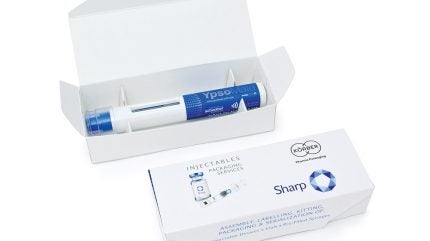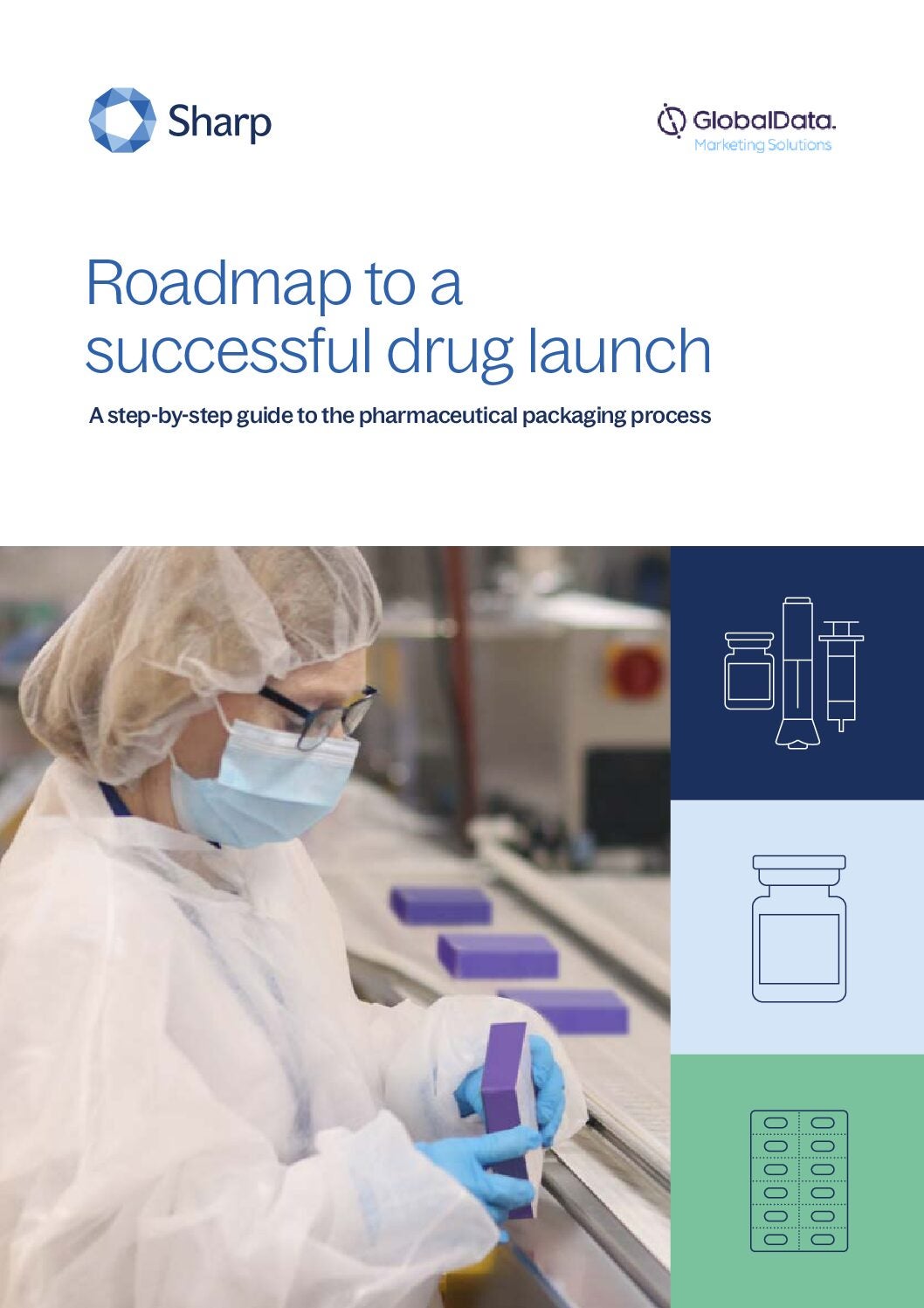
The market for injectables is surging, with autoinjectors growing due to their convenience in allowing patients to self-administer medication instead of requiring a trained healthcare provider. Further, the need for sustainable, eco-friendly solutions, such as biodegradable material alternatives, is also increasing to reduce waste and lower overall carbon emissions. This evolution of pharmaceutical packaging must still result in a compliant and user-friendly design that does not compromise patient safety.
But while the sector is changing rapidly, issues concerning safety, sterility and shipping can cause challenges when transitioning to more eco-friendly or patient-centric designs.
Sustainability in secondary packaging
The need to adopt more sustainable solutions is currently one of the biggest challenges facing secondary packaging. A transition away from plastic and other carbon-intensive materials is now underway but comes with challenges.
“Many new, sustainable materials don’t have such a ‘clean finish’ as materials that we’ve been working with previously,” explains Mitch Darnell, Pharma Packaging Designer at Sharp, a leader in pharmaceutical packaging solutions. “We tend to see a lot of brown Kraft or chipboard materials that can be difficult to print legible information necessary for the end user to easily read. However, I would say that the biggest challenge we face is cost. A lot of these eco-materials are relatively new and not well known at this time on the market; because of this, they are not produced at high volumes compared to conventional materials, so they are sometimes more expensive.
“One significant development for Sharp is that we are introducing our clients to folding box board (FBB) as an alternative to solid bleached sulfate (SBS) paperboard as a secondary packaging material. FBB utilizes some recycled content giving the product a lower carbon footprint overall. In addition, some compliant alternatives to a plastic tray insert that will safely hold drug product and components in place within a carton, include mono material cardboard, recyclable and biodegradable PaperFoam® and recycled thermoform plastic through closed loop recycling. The industry standard until now has been single-use thermoform plastics made from virgin material, which have a significantly higher carbon footprint compared to modern alternatives.”
Jasper Groefsema, packaging expert from PaperFoam® adds: “the pharma industry requires the security of knowing a therapy will arrive to the end-user safely, so it’s critical that eco-friendly packaging alternatives are durable. This can be achieved through energy-efficient, low-carbon manufacture of biobased materials that are 100% compostable, can be sourced regionally, and are lightweight in comparison to traditional packaging. Reducing carbon footprint without compromising quality and protection is the collaborative goal for all of us working in the pharmaceutical packaging market.”
The Sustainable Materials Innovation Group (SMIG) is a cross functional team of experts at Sharp who have come together to explore new innovative sustainable solutions. The group is currently testing a range of new materials to ensure alternative materials will have no negative impact on the sterility of drug products. Darnell emphasizes the importance of properly qualifying and validating these new options before being presented as a sustainable approach to commercial drug packaging.
In Europe, new legislation has been introduced to drive a sustainable and circular economy, says Greg Nijs, Artwork Supervisor: “One of the challenges we face is the ingredients used for printing inks and adhesives that will be prohibited in the near future. For instance, we must be prepared to mitigate technical issues associated with printing certain varnishes.”
However, on the carton front, technologies are helping with the transition, such as the Dividella NeoTop top-loading cartoners installed at both US and EU Sharp locations. These fully integrated cartoning machines erect paperboard cartons, form partitions/tray inserts, load the product and components into the cartons, and then serialize. In addition to utilizing sustainable materials, the product packaging is designed carefully to fit the contents, minimizing empty space, further reducing environmental impact related to transportation.
Another way to reduce waste would be to implement electronic QR code technology as a replacement for physical inserts, however this is not yet regulated by the FDA. The challenge is that designing for injectable unit doses requires clear and accessible adherence labeling, as Jennifer Herrera, Supervisor, Packaging Design Services, explains:
“When trying to make a package smaller for sustainability purposes, you also need to balance the need for graphical real estate to include instructions for use that allow the end-user to properly administer the drug. This balance may be difficult to achieve so having the ability to use QR codes with video links would help, but the regulations don’t yet allow that, so we do need to continue to consider the written end-user instruction requirements and the physical packaging.”
Patient-friendly design – including child-resistant and senior-friendly (CR/SF) packaging
Another key consideration is the importance of child-resistant injectables packaging – a growing market due to the rise in public awareness around child safety and the increase in use of autoinjectors/pens. The goal is to create packaging that is both difficult for children to access, with a two-step opening feature, but easy for adult users, especially senior patients who may have mobility or dexterity issues.
This balance is critical, says Herrera:
“There are no CR/SF regulations around injectables – it’s specific to oral dose products, but the basic concepts behind child-resistant and senior-friendly packages still apply. When necessary, we will partner with our commercial suppliers to engineer a perforation pattern or increase the seal areas around the blister cavities to create more resistance during opening. These tiny changes can impact how difficult or how easy a package can be accessed, and we select a final design only after comprehensive testing.”
An example of a patient centric design that Sharp has worked on is a sealed tray that holds a larger injectable delivery device designed for patients with arthritis. The device is large and easy to administer and needed to be sealed into a tray with an accessible pull tab opening feature and a resistance free removal of the device from the tray. Several design iterations were made until there was a perfect balance between a sealed and secure tray, and easy removal of the device for administration.
Graphics and labeling also play a significant role in patient-centric design. While pharmacy shelves typically have plain packaging, drug products designed for home shelves must have more details in the instructions for use. Labeling is crucial for end users to understand the product’s instructions and ensure clarity of drug administration.
“There’s a lot more color coordination when it comes to labeling on a package that goes to a patient as the end user,” explains Herrera. “That’s because color coordination might be indicative of the order of steps that they need to take to self-administer the drugs, whereas you may not need that at a hospital location or pharmacist.”
Shipping studies for packaging design
A key part of product safety depends on patients or administrators receiving their injectables in one piece, making shipping distribution studies an important aspect of the drug launch process. Such studies are especially important when working with newer devices such as autoinjectors and nasal inhalers.
In accordance with ASTM/ISTA standards, shipping studies simulate the entire shipping process based on how the product will go to market from the distribution center, with testing schedules designed to resemble the impact and vibration of shipping and handling, low altitude chambers simulating air travel, and back to impact testing. Simulating all shipping conditions is important, as low-altitude environments may create a vacuum, causing plungers to pop out of syringes while shock and vibration may damage the drug product or outer packaging, leading to illegible text. A key design consideration includes the orientation of vials and syringes, as most cannot be sat on their side or upside down.
Herrera explains that shipping studies happen during design verification:
“If you learn something from the ship study that triggers a design change, time is required for amends and potentially run a second, more limited shipping study to verify that the changes are effective.”
“It’s about risk mitigation,” she adds. “If something comes out of the study that we need to adjust or correct for, then there’s more opportunity for us to learn and build on that data. We are still early in that process for the newer devices being built with sustainability factors in mind.”
Although it is essential to design a product that remains intact and accessible in transit, it’s important to do so while minimizing material usage for strength, stability, and ease of use, says Darnell. He adds that the simplicity and efficiency of the packaging assembly process must also be considered.
“The more functionality a device needs to have could affect the way our associates interact with the packaging during assembly,” he says. “It’s always a balancing act. We must ensure that we’re designing in a circular manner. We have to think about packaging associates, we have to think about end users, and we also have to consider what the packaging is going to do in transit.”
Speed to market and finding the right partner
Herrera adds a few final comments around speed to market:
“When working with new sustainable materials and solutions, it does affect speed to market. But the more we integrate new materials and processes, the more experience we have to offer our clients. Design is not always a linear process.”
Darnell concludes the discussion by saying that partnering with the right customers is vital when implementing innovative and sustainable solutions:
“Right now, working in our Sustainable Materials Innovation Group and with the Alliance to Zero, we have teamed up with several large pharmaceutical manufacturers that are beginning to prioritize sustainability over speed, cost and aesthetic presentation. Design materials, technology and solutions are evolving rapidly and as packaging design experts, we are able to bring those innovations to the attention of our clients as we collaborate on redesigning their existing packaging or develop new package designs for their drug launches.”
For more information on Sharp and its solutions, download the free paper below.



